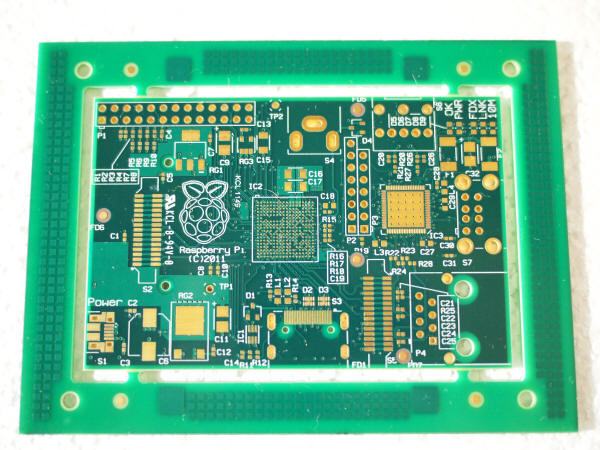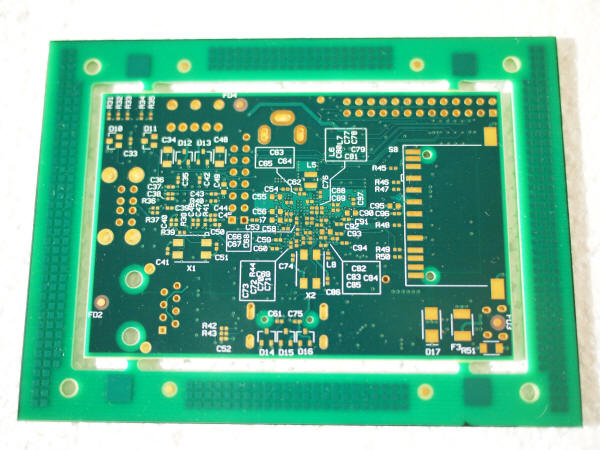
Raspberry Pi unpopulated PCB, front.
High-res pics of the PCBs
liz
Raspberry Pi
December 6, 2011
Many people (I was one of them) found last week’s printed circuit board (PCB) pictures a little hard to decipher, because they were teeny-tiny and taken with a camera phone. Pete’s sent me an unpopulated board, which I’ve just been photographing with a proper camera in the six minutes of winter sunshine we get every day in Cambridge. Here are some much more detailed pictures which you can click on to enlarge so all the silkscreening and visible tracking can be seen.

Raspberry Pi unpopulated PCB, front.

Raspberry Pi unpopulated board, back.
I should make a couple of points here to clarify what you’ll get when you order your own Raspberry Pi. We show you pictures like this and explain where we are in development and manufacture because we’re very interested in providing transparency about the way we work, especially because we have such a large and information-hungry community. Unfortunately, some people who aren’t used to this approach do sometimes jump to conclusions about what we’re doing as a result. So:
You will not be sent a bare board like this that you have to solder parts onto yourself. This is just an illustration of what the boards look like part-way through the manufacturing process. We’ve been a little surprised that our decision last week to show you the boards before they’ve been finished led immediately to speculation in some quarters that we weren’t going to bother doing all the work to populate them. Please don’t worry: there is absolutely no soldering required in the finished product. There’s a lot of fine-pitch BGA mounting on this board (which you’ll see if you click through to the larger pictures), and this is impossible to solder by hand; it’s why we use robots. Some of the components, specifically the very large bits like the connectors, are soldered by hand in the factory, because this works out a little cheaper than using robotics, but the vast majority of the parts are mounted by pick-and-place robots, and we can’t sell them to you separately.
After all that, though, I should point out that we are not shipping with the GPIO pins connected; those who want to use them have asked us not to because they want the flexibility to mount them to project from the front or the back, and some want pins with a 90º bend for their own projects. If you’re planning on using the GPIO, you’re already a hardware hacker with a good idea of how to mount them, so we’re not concerned about this.
The mounting you see around the edge of the board will not be there when you buy your Raspberry Pi, and we can’t make a separate batch with it still on as some have requested; it’s there for manufacturing purposes only. Some people also suggested we were wasting copper when they looked at the mounting because they could see the little squares embedded in the frame. This is actually an artefact of the PCB making process: without those squares, the flow of substrate at the edges of the board is unpredictable and can be too thin to support the layers of circuit board. Those squares ensure that the flow is even all the way up to the edge. We are signed up to a whole host of electronics waste management agreements, and I promise you that we do our very best not to waste anything. Quite apart from worries about the environment, it wouldn’t be a cost-effective way to work, and we are really very serious about bringing the Raspberry Pi to you at the very low prices we’ve been promising all along!
Copyright 2011 http://www.raspberrypi.org/